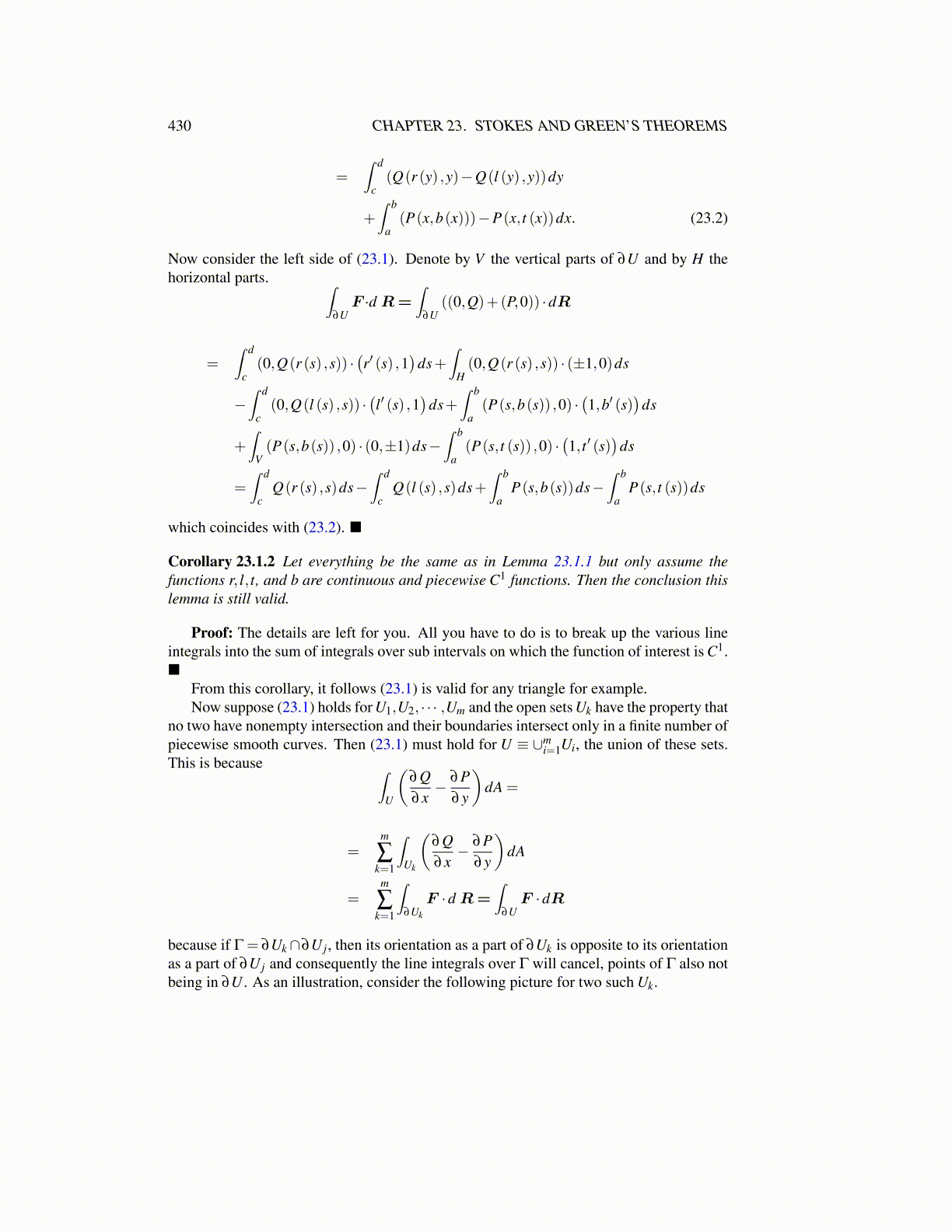
430 CHAPTER 23. STOKES AND GREEN’S THEOREMS
=∫ d
c(Q(r (y) ,y)−Q(l (y) ,y))dy
+∫ b
a(P(x,b(x)))−P(x, t (x))dx. (23.2)
Now consider the left side of (23.1). Denote by V the vertical parts of ∂U and by H thehorizontal parts. ∫
∂UF ·d R=
∫∂U
((0,Q)+(P,0)) ·dR
=∫ d
c(0,Q(r (s) ,s)) ·
(r′ (s) ,1
)ds+
∫H(0,Q(r (s) ,s)) · (±1,0)ds
−∫ d
c(0,Q(l (s) ,s)) ·
(l′ (s) ,1
)ds+
∫ b
a(P(s,b(s)) ,0) ·
(1,b′ (s)
)ds
+∫
V(P(s,b(s)) ,0) · (0,±1)ds−
∫ b
a(P(s, t (s)) ,0) ·
(1, t ′ (s)
)ds
=∫ d
cQ(r (s) ,s)ds−
∫ d
cQ(l (s) ,s)ds+
∫ b
aP(s,b(s))ds−
∫ b
aP(s, t (s))ds
which coincides with (23.2). ■
Corollary 23.1.2 Let everything be the same as in Lemma 23.1.1 but only assume thefunctions r, l, t, and b are continuous and piecewise C1 functions. Then the conclusion thislemma is still valid.
Proof: The details are left for you. All you have to do is to break up the various lineintegrals into the sum of integrals over sub intervals on which the function of interest is C1.■
From this corollary, it follows (23.1) is valid for any triangle for example.Now suppose (23.1) holds for U1,U2, · · · ,Um and the open sets Uk have the property that
no two have nonempty intersection and their boundaries intersect only in a finite number ofpiecewise smooth curves. Then (23.1) must hold for U ≡ ∪m
i=1Ui, the union of these sets.This is because ∫
U
(∂Q∂x− ∂P
∂y
)dA =
=m
∑k=1
∫Uk
(∂Q∂x− ∂P
∂y
)dA
=m
∑k=1
∫∂Uk
F ·d R=∫
∂UF ·dR
because if Γ = ∂Uk∩∂U j, then its orientation as a part of ∂Uk is opposite to its orientationas a part of ∂U j and consequently the line integrals over Γ will cancel, points of Γ also notbeing in ∂U . As an illustration, consider the following picture for two such Uk.